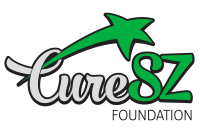
Stephen Rush,医学博士,临床精神病学副教授
根据美国国家心理卫生研究所(NIMH)的数据,2017年,美国有1060万成年人有过自杀的严重想法,280万人制定了自杀计划,130万人自杀未遂,47173人死于自杀。 据世界卫生组织估计,全世界每年有100万人死于自杀,自杀率为每2分钟3人。
精神分裂症患者的自杀死亡率远远高于普通人群,据报道,有时高达每 10 万名精神分裂症患者中有 13,000 人自杀,而普通人群中每 10 万人中只有 13 人自杀。 它是导致该人群过早死亡的最大原因。 自杀死亡的风险在精神分裂症发病后的头两年内最高,并且更多发生在男性、同时患有抑郁症和药物使用障碍的患者以及有自杀未遂史的患者身上。 通常,精神分裂症的治疗重点是减少幻觉和妄想,但显然,任何治疗计划的一个重要部分都包括自杀预防策略。
要预防精神分裂症患者自杀,就必须打破人们对精神疾病的成见,将有关这一话题的讨论推向公众,无论是与临床医生、家庭成员还是支持团体。 考虑到即使在精神分裂症患者中也已经存在的耻辱感,这是一项极具挑战性的任务。 据报道,大多数自杀者都会就自己的意图发出明确的警告,而且往往会在企图自杀前的充足时间内发出警告。 此外,大多数有自杀倾向的人对死亡的态度是矛盾的。 这与自杀者从不谈论自杀、不发出警告、一心想结束自己生命的成见相矛盾。 精神分裂症患者的自杀风险很高,这就要求我们必须公开讨论这一话题,不能有偏见,也不能担心会产生负面影响。 事实上,提高对自杀想法的认识与降低自杀风险是息息相关的。
普遍的预防策略必须包括通过媒体渠道传播准确的信息,消除不准确和有偏见的信息,这些信息会使有自杀倾向的个人边缘化。限制使用高度致命的自杀手段(如枪支)已被证明可以减少自杀的发生率,并且要求我们作为一个社会,提倡保护我们弱势公民的法律法规,即使面对来自的尖锐批评反对。
选择性战略必须针对有自杀风险的人群,需要对这些人群进行广泛筛查,并就自杀问题进行坦率、公开的讨论。 我们必须像心肺复苏术(CPR)等干预措施一样,教育和培训所有社会成员处理自杀问题,心肺复苏术是一种广为人知的治疗心脏骤停的方法,社会上许多部门都开展了相关教育,而不仅仅局限于医护人员。 试想一下,如果像各种职业和活动要求进行心肺复苏术培训一样,把提高自杀意识作为一项要求,那么这将会对减少自杀事件的发生起到怎样的作用。
涉及精神分裂症患者的个体策略必须包括家庭、社区和医生的参与。必须让精神科医生了解氯氮平在降低精神分裂症患者自杀风险方面的明显益处(Meltzer 等人,2003 年),因为研究表明这种治疗方法未被广泛利用。社区合作,其中多学科团队可以为精神分裂症患者提供一系列支持,例如积极的社区治疗 (ACT) 应该成为护理标准,并且更容易为社会各界所接受。家庭教育、社交技能培训和认知行为治疗,如果所有患者都能轻松获得,无论保险和支付能力如何,同样会对预防自杀产生重大影响。
总之,作为一个社会,我们必须认识到我们社区中患有精神分裂症的人自杀的高风险是预防的第一步。我们必须减少围绕这种脑部疾病和自杀的耻辱感,并注意风险因素。我们必须提倡立法和医疗改革。或许最重要的是,我们必须作为一个社区行动起来,为我们这部分人口提供支持,并增加获得有效护理的机会。
参考
精神病院住院后青少年及时门诊心理健康服务与自杀死亡风险的关联。 丰塔内拉等; JAMA 网络公开赛。 2020;3(8):e2012887。
氯氮平治疗精神分裂症的自杀倾向:国际自杀预防试验 (InterSePT)。 梅尔策等;国际自杀预防试验研究小组。 Arch Gen 精神病学。 2003. 一月;60(1):82-91
精神分裂症谱系障碍诊断时的自杀预测因素:一项在加拿大安大略省进行的为期 20 年的总人口研究. Zaheer 等人(出版中); Schizophr 水库 https://doi.org/10.1016/j.schres.2020.04.025
预防自杀.谢尔,L. QJM。 2004 年 10 月;97(10):677-680。
精神分裂症治疗中对疾病和自杀风险的认识:国际自杀预防试验的结果。 资产阶级 M 等人。是。 J精神病学。 2004. 161:1494-1496
管理精神分裂症患者的自杀风险。 Kasckow J、Felmet K 和 Zisook S. CNS 药物。 2011;25(2): 129-143
自杀。 (2020 年 9 月)。取自 https://www.nimh.nih.gov/health/statistics/suicide.shtml#part_154969

